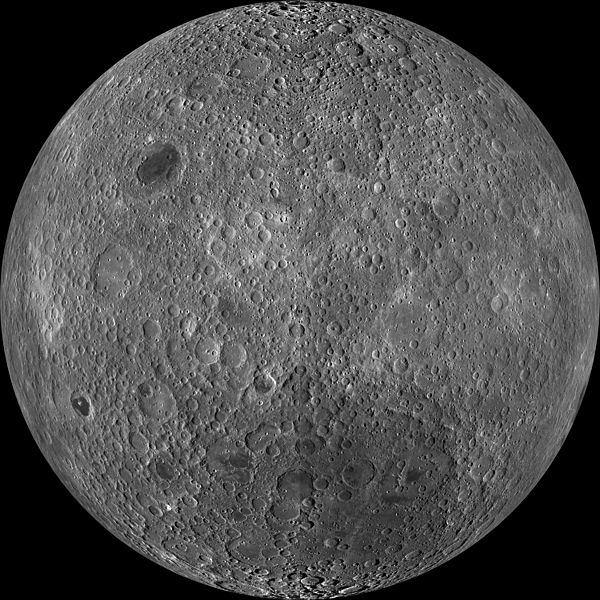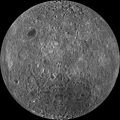Apamduööt:Moon Farside LRO.jpg

Thöŋ ë këkoŋtiŋë: 600 × 600 kolook Tïckatïŋ kɔ̈k: 240 × 240 kolook | 480 × 480 kolook | 768 × 768 kolook | 1,024 × 1,024 kolook | 2,048 × 2,048 kolook | 18,000 × 18,000 kolook.
Makec tueŋ (18,000 × 18,000 kolook, thëndït de aduötyɔ̈r: 85.34 MB, MIME kuat: image/jpeg)
Käthɛɛr ë makec
Tuenyë në aköl/akɔ̈licic apamduööt ɣoi kecit rɔt nyuɔɔth në akölic.
| Aköl/Akɔ̈lic | Riöpbundït | Thëmthëm | Dului | Këcïjaamic | |
|---|---|---|---|---|---|
| ee mënë | 01:47, 20 Pɛnëdiäk 2014 |  | 18,000 × 18,000 (85.34 MB) | Huntster | High resolution mosaic. |
| 06:12, 9 Pɛnëŋuan 2011 |  | 1,600 × 1,600 (1.44 MB) | Bubba73 | {{Information |Description ={{en|1=Far side of the Moon, by NASA's Lunar Recon. Orbiter}} |Source =http://apod.nasa.gov/apod/image/1104/farside_lro1600.jpg |Author =NASA - LRO |Date =2011? |Permission = |other_versions = } |
Luɔi ë apamduööt
Cin apaam ye nuët lɔ wëtmätkën.
Luui ë yɔ̈rcïduut de pinynhom
Wiki kɔ̈k bɔ̈ looi makec kënë
- Luɔi af.wikipedia.orgic
- Luɔi az.wikipedia.orgic
- Luɔi be.wikipedia.orgic
- Luɔi bjn.wikipedia.orgic
- Luɔi bn.wikipedia.orgic
- Luɔi bs.wikipedia.orgic
- Luɔi ca.wikipedia.orgic
- Luɔi cs.wikipedia.orgic
- Luɔi de.wikipedia.orgic
- Luɔi en.wikipedia.orgic
- Luɔi en.wikibooks.orgic
- Luɔi en.wikiversity.orgic
- Solar System, technical/Moon
- User:Marshallsumter/Radiation astronomy2/Visuals
- Draft:Original research/Planets
- User:Marshallsumter/Radiation astronomy2/Visuals/Quiz
- User:Marshallsumter/Rocks/Rocky objects/Astronomy
- User:Marshallsumter/Radiation astronomy/Courses/Principles/Hourly 2
- User:Marshallsumter/Radiation astronomy/Courses/Principles/Midterm quiz
- User:Marshallsumter/Radiation astronomy/Courses/Principles/Final quiz
- Titan/Quiz
- User:Marshallsumter/Rocks/Rocky objects
- Draft:Enceladus/Quiz
- Moon/Quiz
- Stars/Sun/Heliology/Quiz
- Earth/Quiz
- Stars/Reds/Quiz
- Draft:Dione/Quiz
- User:Marshallsumter/Radiation astronomy2/Scattered disks/Quiz
- User:Marshallsumter/Radiation astronomy1/Kuiper belts/Quiz
- Liquids/Liquid objects/Moon
- User:Marshallsumter/Radiation astronomy/Craters
- Luɔi es.wikipedia.orgic
Tïŋ luui de tëriëcëbɛ̈n juëckɔ̈k de apamduööt kënë.

